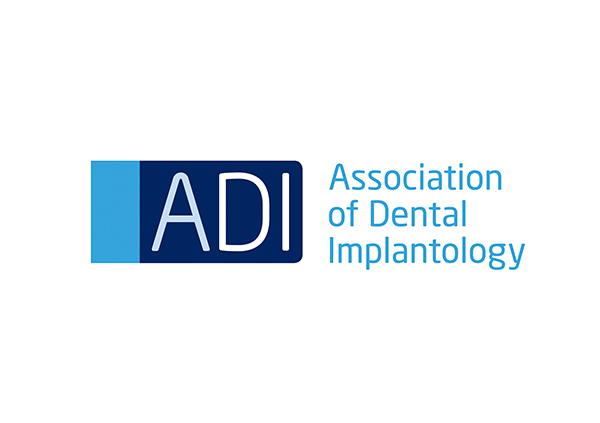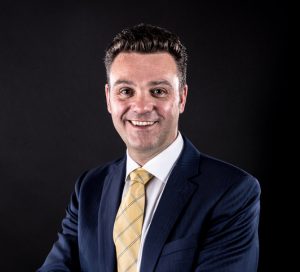The “F” Word….where F is for Failure – Mark Willings – ADI National Forum
Featured Products Promotional FeaturesPosted by: Dental Design 3rd May 2018

 Dr Mark Willings, Director of the Horbury Dental Implant Clinic and Honorary Clinical Teaching Fellow at Manchester University Dental Hospital, was among the esteemed speakers at the ADI Members’ National Forum 2017. Entitled, “Implant Failure – What Can We Learn”, Dr Willings’ lecture shed some light on what is still a relatively untouched subject:
Dr Mark Willings, Director of the Horbury Dental Implant Clinic and Honorary Clinical Teaching Fellow at Manchester University Dental Hospital, was among the esteemed speakers at the ADI Members’ National Forum 2017. Entitled, “Implant Failure – What Can We Learn”, Dr Willings’ lecture shed some light on what is still a relatively untouched subject:
“While research is available on dental implant failure and the reasons behind it,[i],[ii] the profession is still very uncomfortable talking about the issues that can present,” he explained when asked about his recent session.
“I think this is because many consider failure to be a weakness. On the contrary, I believe there is much to be learnt from analysing our problems, and as responsible reflective professionals, we have a duty to share this with our colleagues so that we can all develop and improve treatment outcomes.”
Dr Willings focused away from early failure and failure to integrate as there is much of this in the literature. He said: “We know that lack of primary stability, smoking, complex medical history and extensive bone grafting can all impact on osseointegration. For the purposes of this presentation I wished to concentrate on cases where osseointegration had occurred.”
Dr Willings classified failures into the following groups:
- Dentist failure because of:
- Inappropriate prescription
- Inadequate planning
- Poor surgical execution
- Poor prosthetic management
- Inadequate maintenance
- Patient failure
- Poor compliance with instructions
- Poor compliance with maintenance / home care
- Poor compliance with recall attendance for professional support
- Non disclosure of medical and dental history
- Laboratory / technical failure
- Failure to follow material protocol
- Failure to execute processes with accuracy and precision
- Poor execution of lab processes
- Improper design for CAD/CAM restorations
- Component / material failure
- Fracture of screws
- Fracture of abutments
- Fracture of dental implants
- Fracture of superstructure (including beams, acrylic and porcelain)
- General wear and tear
- Biological failure
- Peri-implant mucositis
- Peri-implantitis
The areas of failure that are most avoidable, he said in his lecture, are those directly within the dentist’s control. Dr Willings recommends three simple steps to help reduce the frequency of failure from malpositioned / unrestorable dental implants and maximise the chances of success.
“My first tip is to always take a CT scan. While there is evidence to suggest that CT scanning doesn’t prevent all problems,[iii] when used correctly they can provide very useful information to aid planning. It can also reveal pathology that is not visible on a traditional radiograph, which can help the clinician to visualise the proposed site with much greater clarity.
“I would also suggest making a diagnostic wax-up. Look at the proposed result you are trying to achieve, and work backwards. Ideally, superimpose this using appropriate software onto your CT scan so that the proposed tooth position can be related to underlying bone and then make a guide to assist correct placement. Lastly, speak to your technician. To prevent failure, close collaboration is absolutely essential before placing any dental implant.
“Failure can largely be avoided, but it is important to recognise that sometimes it is beyond our control,” Dr Willings concludes. “Let us share our failed cases so we can simultaneously help others, whilst enhancing our own understanding of implant dentistry. Setting patient expectations is also critical. As we know, dental implants are not a bionic replacement for teeth, but an option to consider when faced with losing a natural tooth/teeth. Neither are they necessarily better than other treatment pathways, as much depends on individual circumstances and the clinical situation. We must remind patients that dental implants can – and do – fail, and that they are not a miracle cure. Nevertheless, we know from our successfully treated patients that dental implants can change some patients’ lives, so let’s work together to make a difference.”
Contact the ADI today for more information about the educational opportunities available and how to become a member.
For more information about the ADI, or to join, please visit www.adi.org.uk
[i] Nallaswamy DV, Ramalingham K, Bhat V. Impant Dentistry In: Textbook of Prosthosdontics 1st Ed. New Delhi: Jaypee Brothers Medical Publications; 2003 p.736 – 38.
[ii] Prashanti E, Sajjan S, Reddy JM. Failure implants. Indian J Dent Res. 2011; 22 (3): 446-53. Accessed online January 2018 at doi: 10.4103/0970-9290.87069.
[iii] Shelley AM, Ferrero A, Goodwin M, Horner K. The impact of CBCT imaging when placing dental implants in the anterior edentulous mandible: a before–after study. Dentomaxillofac Radiol. 2015; 44 (4): 20140316. Accessed online January 2018 at doi: 10.1259/dmfr.20140316.
No Comments
No comments yet.
Sorry, the comment form is closed at this time.



